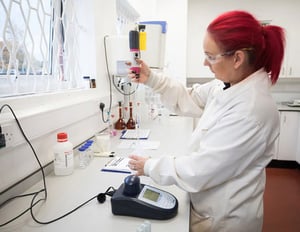Something unusually precise is unfolding beneath the surface of regional aviation, an effort not aimed at headlines but at dismantling the logistical and regulatory blocks that have kept cleaner fuels out of everyday service. It’s not about pledges or posturing, but execution.
ATR, the long-established manufacturer of regional turboprops, has entered a targeted partnership with ATOBA Energy designed to make sustainable aviation fuel a realistic option for smaller airlines. Announced at the Paris Airshow, the agreement addresses a core issue often overlooked in broader aviation decarbonisation plans: the structural barriers preventing SAF adoption outside major hubs.
Regional carriers have faced a unique set of constraints. While SAF offers up to 80 per cent lifecycle emissions reduction, its availability remains patchy, its cost high, and its delivery infrastructure concentrated in a few locations. ATR’s collaboration with ATOBA tackles these challenges head-on through a dual approach, improving physical access to SAF at regional airports and embedding flexible systems for tracking and claiming its environmental impact.
The technical innovation lies in combining direct fuel logistics with a “book-and-claim” accounting model. This system, in line with internationally recognised emissions frameworks, allows airlines to take credit for SAF emissions savings even when the fuel is not delivered directly to their location. It’s a model designed to scale, offering immediate environmental benefits without waiting for infrastructure to catch up.
For ATR, this initiative isn’t a side project. It forms part of its broader 2030 goal to make its aircraft fully SAF-capable. That commitment requires more than engine adaptations, it demands a full ecosystem capable of supporting SAF uptake across a fragmented and globally dispersed user base. By working with ATOBA, a specialist in SAF aggregation and distribution, ATR is putting commercial practicality at the centre of its decarbonisation strategy.
The implications are significant. While much of the aviation sector’s sustainability conversation is dominated by large carriers and long-haul routes, regional aviation accounts for a vast number of daily flights across diverse geographies, many of them underserved by current fuel systems. Bringing SAF into these markets not only reduces emissions at scale, it also introduces consistency into a space that’s often left behind in regulatory frameworks.
What makes this approach notable from an investor perspective is its blend of ambition and operational realism. ATR isn’t just responding to pressure; it’s building systems. Delivery chains, emissions attribution models, and technical integration platforms are all part of a replicable blueprint, one that other segments of the industry could adopt if proven effective.
Moreover, ATOBA’s role adds financial and structural depth. As a SAF aggregator, it brings the purchasing power and contracting stability smaller carriers often lack. Their ability to pool demand, secure long-term supply, and manage regulatory interfaces reduces friction and enhances the bankability of sustainable fuel solutions. Together, they’re creating the kind of framework that enables action, not just intention.
This project’s timing also matters. With regulators moving toward mandatory SAF targets and carbon accounting tightening, the ability to offer airlines a turnkey path to compliance becomes not just attractive, but essential. ATR is positioning itself not merely as an aircraft supplier, but as a partner in regulatory readiness—an enabler of futureproof operations in a constrained and competitive market.
The real value here is strategic optionality. Regional airlines typically have limited leverage in fuel sourcing and limited capital to navigate environmental compliance. By removing access barriers and embedding SAF capability into both aircraft and supply systems, ATR enhances the resilience and relevance of its product offering. Investors would do well to watch how this model performs, not just in emissions savings, but in market adoption and repeatability.
What ATR and ATOBA are building is more than a single programme; it’s a modular, standards-based framework for making SAF viable in regions where demand exists but access has stalled. If successful, it could form the basis for broader transitions, not only for ATR customers, but for regional aviation as a whole.
ATR designs and manufactures turboprop aircraft used by regional airlines across the globe. By aligning with ATOBA Energy to expand access to sustainable aviation fuel, it is creating a commercial and operational pathway for emissions reduction tailored specifically to smaller carriers operating in dispersed markets.
Avation PLC (LON:AVAP) is a commercial passenger aircraft leasing company owning a fleet of aircraft which it leases to airlines across the world. Avation’s future focus are new technology low CO2 emission aircraft.






































